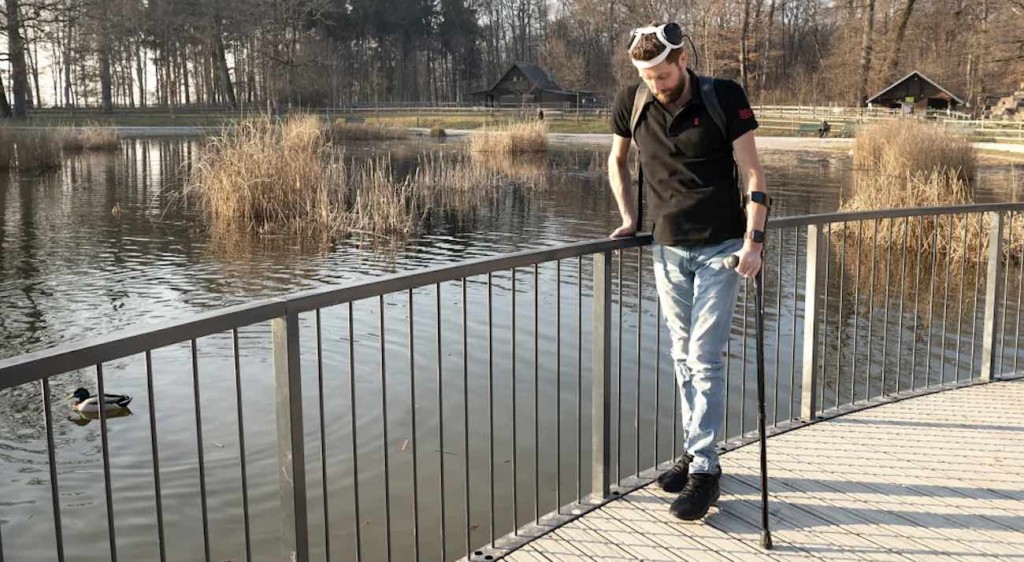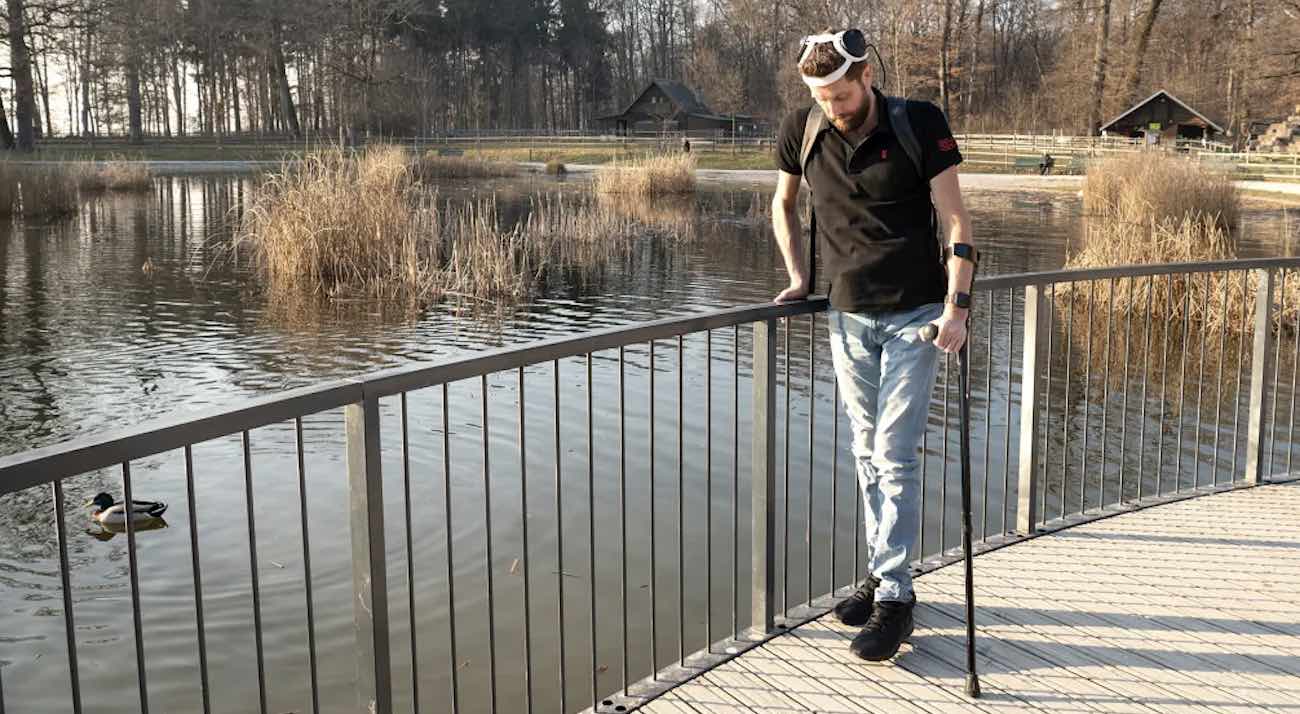
It’s long been supposed that implants could connect prosthetics to the brain in a way that stimulates nervous system commands with electrical signals.
Now, this idea is closer than ever to realization in a meaningful way, as one man paralyzed from the hips down is able to walk unsupported, even up stairs, thanks to such electrical nerve stimulation.
The patient, Gert-Jan Oskam, lost all movement in his legs after suffering a spinal cord injury in a motorbike accident. After using a precursor technology to gain back a little bit of mobility, Oskam enrolled in a proof of concept study to perhaps make further advances.
Previously, he would have to lift his heel, which would trigger a series of electrical impulses in an implant in his spinal cord that would allow his legs to move. But it was clunky and impossible to navigate uneven surfaces.
“The stimulation before was controlling me, and now I’m controlling the stimulation,” Oskam told NBC of his new equipment.
Now, with an implant in his brain, when Oskam thinks about moving his legs, it sends a signal to a computer he wears in a backpack that calculates how much current to send to a new pacemaker in his abdomen. It in turn sends a signal to the older implant in his spinal cord that prompts his legs to move in a more controllable manner. A helmet with antennae helps coordinate the signals.
The scientists developing the technology and working with him detail that he can walk around 200 meters a day, and stand unassisted for around 2-3 minutes. Once, Oskam details, there was some painting that needed to be done, but no one was around to help him. With the new technology, he simply took his crutch and did it himself.
OTHER PROSTHETIC BREAKTHROUGHS: World’s First 3D-Printed Eye Offers Digital Prosthetics
Incredibly, after less than a year, and completely unexpectedly, scientists believe the technology closed the gap in his nervous system, and he can now lift himself out of a chair, and even walk with the help of a crutch, even when the device is turned off.
The scientists are planning in the future to work with patients with paralyzed arms and hands, and even with stroke victims, as the “digital bridge” is a massive advancement in nervous system stimulation technology.
WATCH the story below from NBC…
SHARE This Incredible Advancement In Biotech With Your Friends…





















Incredible…..good luck, my friend….